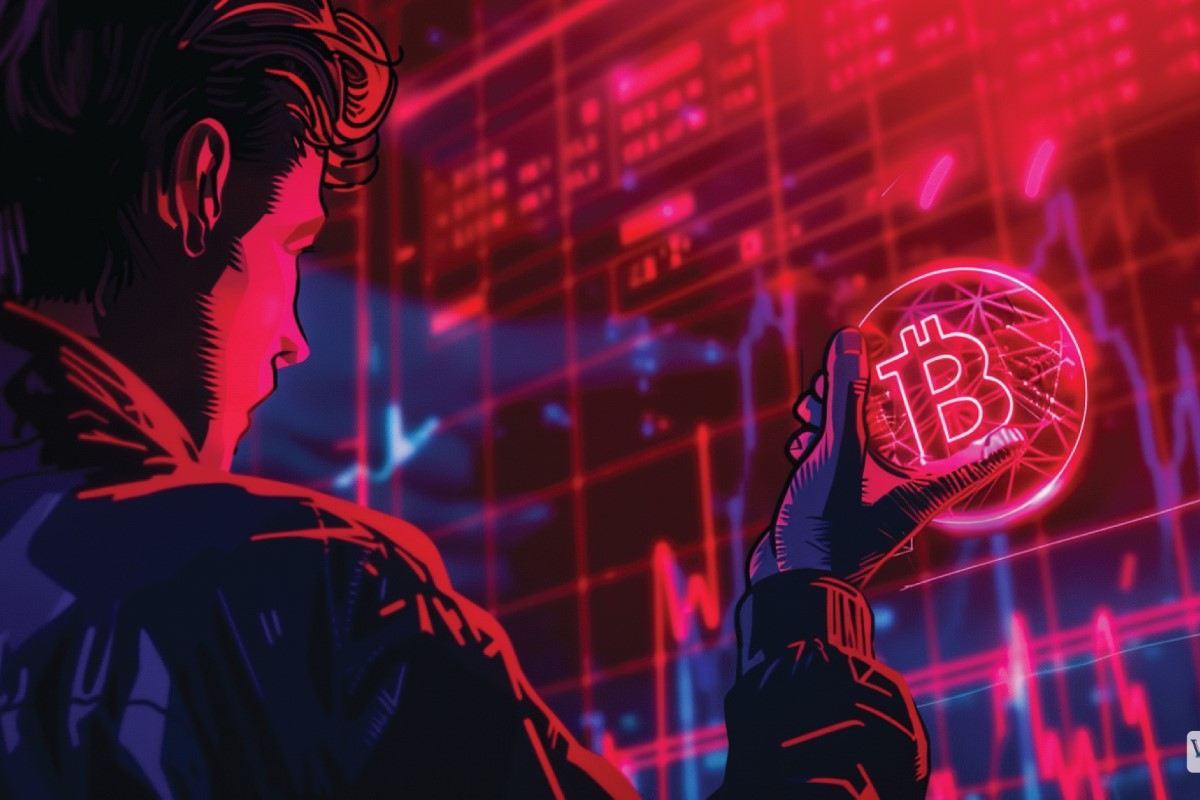Key Insights
- Bitcoin’s next halving event is about 180 days away
- Bitcoin rises massively after halvings, even rising by as much as 1000% in 2020 after the third halving event
- Bitcoin price has almost always increased in the months leading up to these halvings
- Historically, Bitcoin rises massively after halvings. However, the 2024 halving looks slightly bleak, in light of new crypto regulations
Bitcoin, the first, largest and most popular blockchain in the world is headed for something big, and there are a few things you should be aware of.
- Halving, Mining And Bitcoin Cycles
- 5 Bitcoin Halving Charts
- 1. Bitcoin Growth From Prior Bear Market Bottoms
- 2. Bitcoin’s Price Tends to Increase in the Months Leading Up to the Halving
- 3. Bitcoin’s Growth After Halvings
- 4. Bitcoin’s On-chain Activity Before Halvings
- 5. Bitcoin On-chain Accumulation Before and After Halvings
- Putting It All Together
From Proof of Work to Mining, to halving cycles, you should know that this cryptocurrency is less than a year away from one of the most important milestones in its 14-year history and every investor, trader and enthusiast should be on high alert. This event is known as the 4th halving event and is expected to mark the start of the next Bitcoin bull cycle.
But let’s start from the basics, shall we?
In this article, we will explain some of the concepts you may have heard about before. We will also take a look at five charts centred around the halving, and compare some of the prior halving cycles.
All of this is to give you an idea of what to expect in the next cycle. So without further ado, here’s what we got.
Halving, Mining And Bitcoin Cycles
The 21 million coin limit, which ensures scarcity and value, is one of Bitcoin’s most significant features. These coins aren’t all available at once, though. They enter the economy gradually through a process known as mining.
Using specialized hardware and software to solve challenging mathematical puzzles and validate transactions on the Bitcoin network is known as mining. Successful miners receive newly produced bitcoins as well as transaction fees. The quantity of bitcoins they get, though, varies. It develops over time following a planned pattern.
The Bitcoin halving occurs every 210,000 blocks or roughly every four years and when this happens, the block reward, or the quantity of bitcoins created per block, is halved. As a result, there is a gradual drop in the number of fresh bitcoins available, which puts downward pressure on the price.
In the history of Bitcoin, the halving also signifies the end of one cycle and the start of another. Each cycle has distinct traits and trends that may be seen and studied.
5 Bitcoin Halving Charts
Do you think the cryptocurrency is the best digital asset to preserve the value of your money? If so, you must expect that BTC has a lot more potential to grow since its market is much smaller than gold’s.
Bitcoin may have an opportunity to become all of this and more, after the next halving cycle. Here are five charts that show you what’s to come in this year:
1. Bitcoin Growth From Prior Bear Market Bottoms
Bitcoin has experienced four bear markets since its inception in 2009. Each bear market so far, was followed by a power packed bull market, where price of the cryptocurrencies skyrocketed.
For instance, in the first bear market occurred between 2011 and 2012. During this time BTC price fell from a high of $32 to a low of $2 – a 93.75% fall. However, BTC recovered within a year and reached a new all-time high of $266.
The second bear market lasted from 2013 and 2015, BTC fell from $1,242 to a low of $226. However, the price of Bitcoin recovered within two years and reached a new all-time high of $19,783.
The third bear market occurred between 2017 and 2018 when BTC saw a price drop from $20,000 to a low of $3,122. After this Bitcoin spent three years in its recovery phase, eventually hitting the last all-time high of $68,789 in 2021.
The fourth bear market began in 2021 and is still ongoing. So far, the price of the king crypto has fallen from a high of $68,789 and is now struggling to get back on its feet around the $28,000 zone.

2. Bitcoin’s Price Tends to Increase in the Months Leading Up to the Halving
Historical data shows that Bitcoin price has almost always increased in the months leading up to the halvings. In the six months leading up to the 2020 halving (the last one), BTC price saw a 300% rise.
The same happened in the previous ones. For example, 2011 (the year before the first halving) saw Bitcoin explode to about four times its original value.
The cryptocurrency also increased to two times its original value in 2015 (the year before the second halving). However, the cryptocurrency remained largely stagnant in 2020, the year before the third halving, falling to 0.97x.
This presents a crucial question: What comes first? The pump or the halving? And will the same hold for 2023?

3. Bitcoin’s Growth After Halvings
A year after all the previous halving cycles, Bitcoin has increased massively in price, from three times its original value to as much as 90 times as shown in the chart below.

From this, it is easy to predict that the next halving cycle might bring massive bullishness to the cryptocurrency. However, it is important to understand that crypto regulations and other macroeconomic restrictions weren’t as rampant as they are now.
This is around the same time that the Federal Reserve may need to implement quantitative easing (QE) to help the United States recover from its recession, and there is a good chance that the resulting bull run may be relatively underwhelming.
4. Bitcoin’s On-chain Activity Before Halvings
Do halving cycles affect how much Bitcoins are used on-chain? We can answer this question by comparing the percentage of the supply that is active in a one-year rolling window. This refers to the coins that have moved on-chain at least once.
By doing this, we can figure out how many coins are dormant, vs how many coins are being transacted on-chain. If the halving itself was influencing on-chain usage, we would expect this percentage of active coins to increase either before or soon after the halving.

The chart above shows Bitcoin’s growth starting about a year before the halving where each day has a colour based on the active supply.
Blue signifies a low active supply, red shows a high active supply and a change from blue to red around the halving would indicate that halvings indeed affect the on-chain activity of the Bitcoin network. There appears to be little to no correlation suggesting that halvings may have no effects on Bitcoin’s on-chain activity.
5. Bitcoin On-chain Accumulation Before and After Halvings
We already established that halvings have little to no effects on Bitcoin’s on-chain activity. However, historically speaking, does this event affect the rate at which investors rake in the cryptocurrency?
Let’s find out.

The colour scheme in the chart above is similar to that of the previous section. Only now, each day has a colour based on how many coins are being held on-chain. The on-chain accumulation score shows how much demand for Bitcoin there is on-chain, and a high score means that more investors are raking in more coins.
From this standpoint, there appears to be a weak correlation between halving events and investor appetites for buying more Bitcoin. This suggests that halving events may not be very significant as far as this metric is concerned.
Putting It All Together
The halving events may not be the main cause of bull markets. As far as findings show, they don’t affect how much Bitcoin is transacted with on-chain, they don’t necessarily boost the price before they happen, and they have weak correlations with accumulation rates.
However, the fact remains that the idea of halvings being the singular event that improve every single Bitcoin metric could now be outdated.
So, what does next halving cycle have in store for BTC investors?
Well, seems like only time can tell that.
Disclaimer: Voice of Crypto aims to deliver accurate and up-to-date information, but it will not be responsible for any missing facts or inaccurate information. Cryptocurrencies are highly volatile financial assets, so research and make your own financial decisions.








